Abstract
Contents of the rumen, abomasum, ileum, and colon of 100 fattened cattle were examined for the presence of Cl. Perfringens. Liquid medium iniculated with each sample of gut content was tested for the presence of toxins of Cl. Perfringens.
Identification of Cl. Perfringens was based on atmospheric requirements for growth, colonial morphology, and stormy fermentation in litmus milk. Identification of toxins was based on neutralization tests in guinea pigs and mice.
Cl. Perfringens was isolated from 202 of 399 samples. In 105 additional cultures, colonies characteristic of Cl. Perfringens were present but could not be isolated in pure culture.
Cl. Perfringens type D toxin was identified in only one culture, which was inoculated with ileum contents. Type A toxin was identified in eight of the 24 samples from the one lot of samples in which no type A antitoxin was used. There were no identifications of toxigenic types B, C, or E.
The results indicate that an isolation from necropsy specimens of untyped Cl. Perfringens or type A Cl. Perfringens is in itself of little significance. The infrequency of occurrence of the other toxigenic types in this survey of healthy cattle indicates that recovery of these types from necropsy specimens may be of more significance in determining the cause of death.
Full text
PDF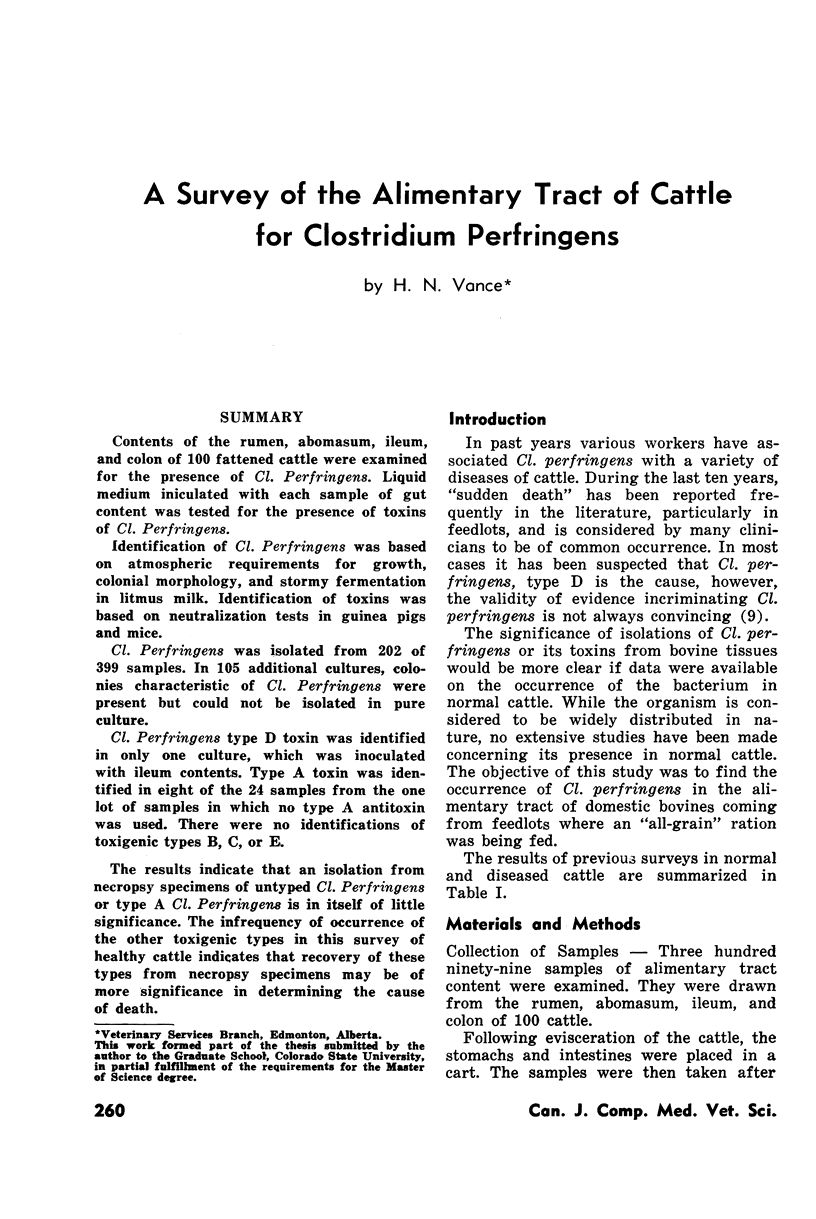
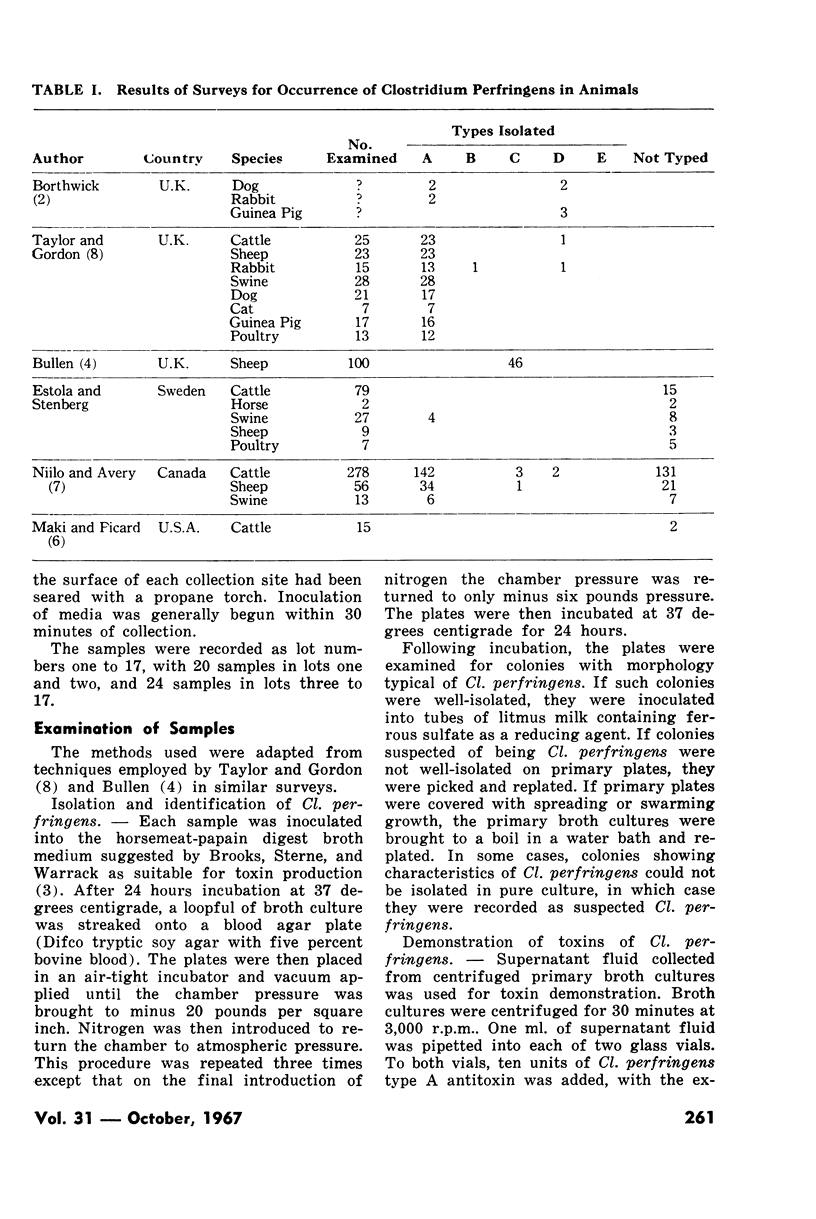
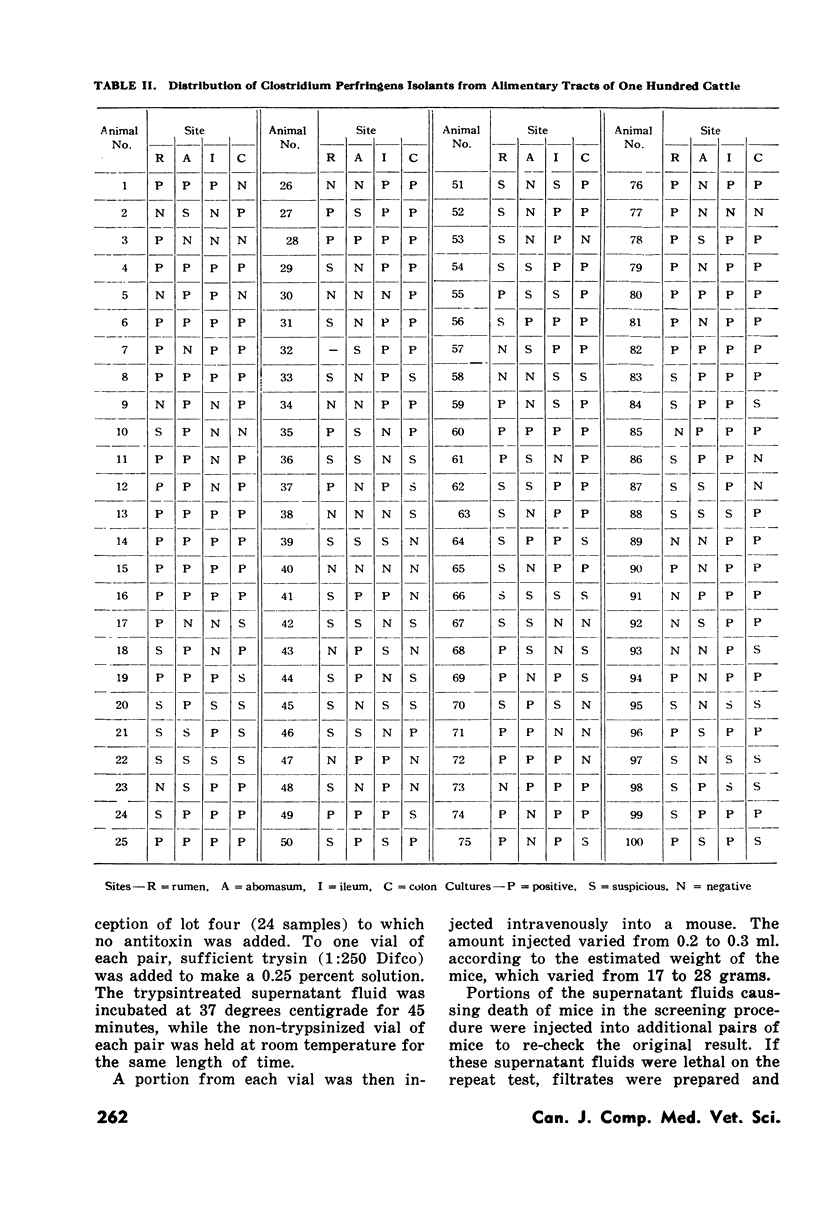
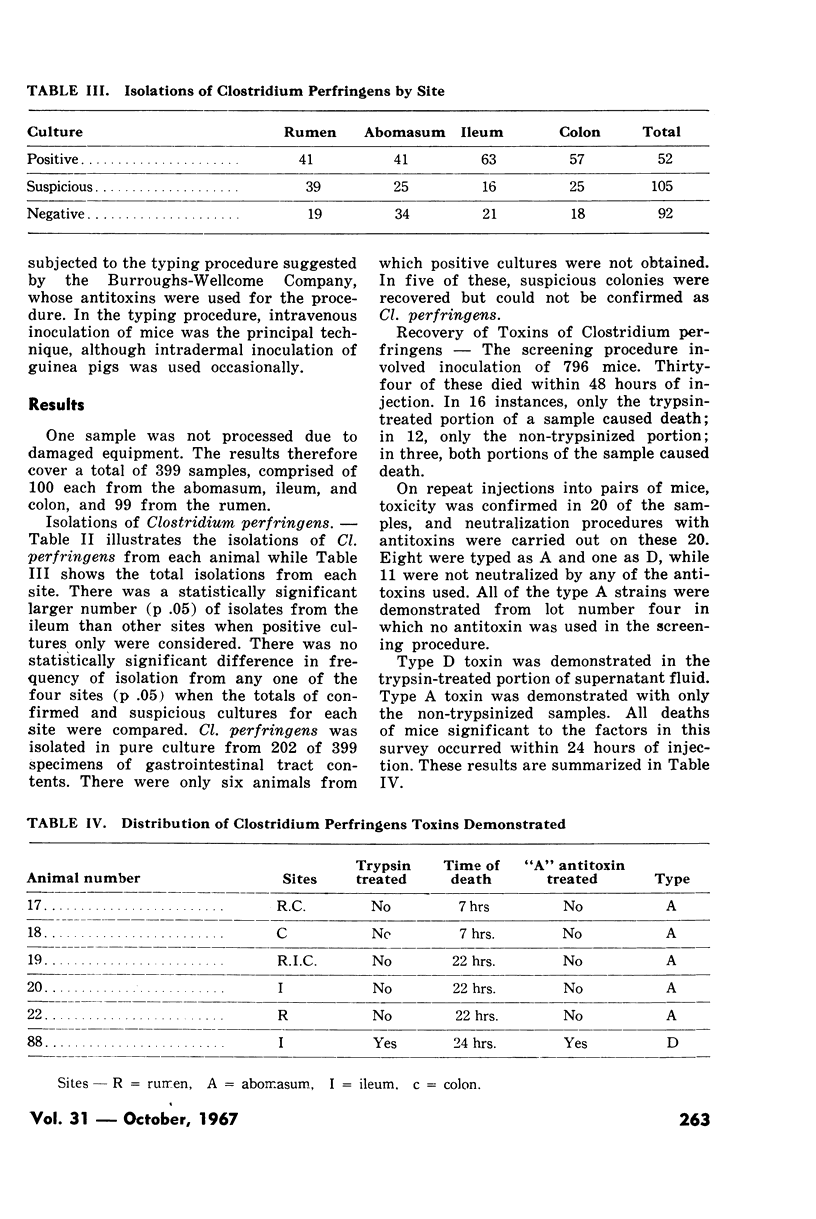
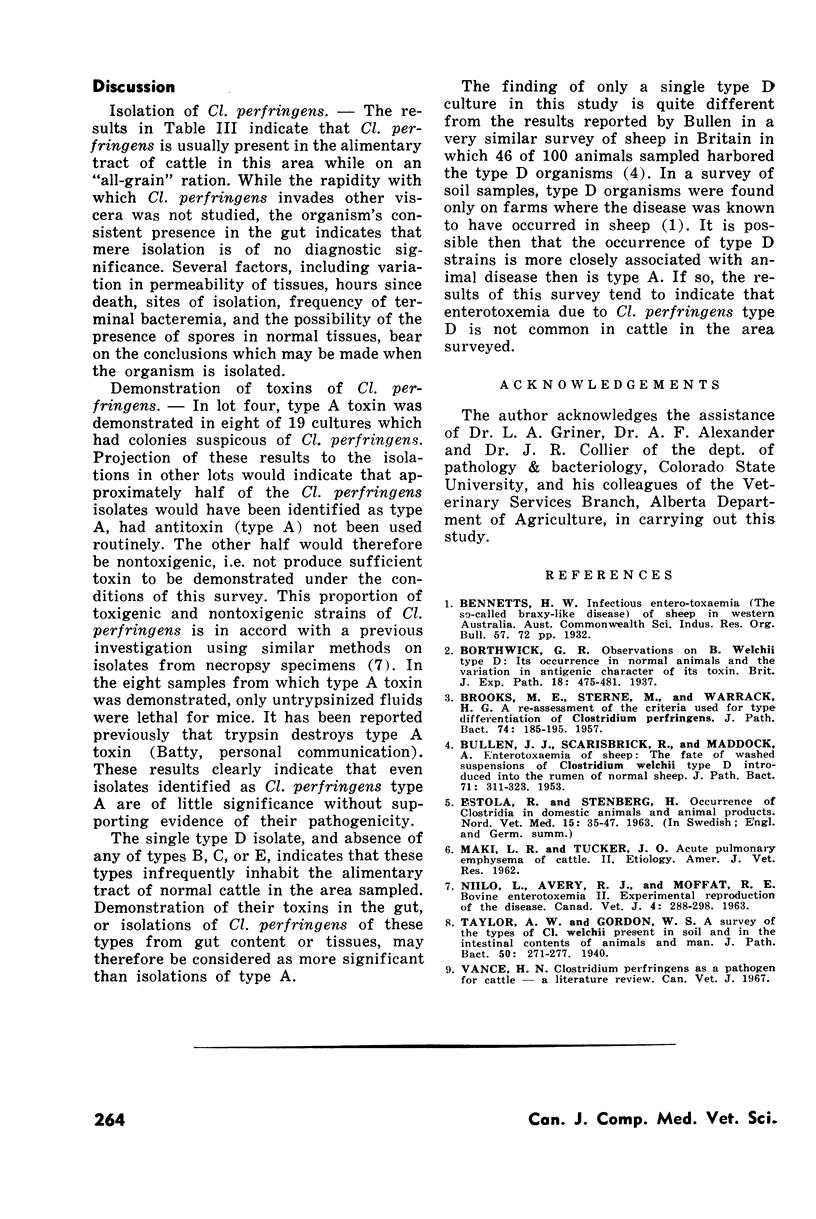
Selected References
These references are in PubMed. This may not be the complete list of references from this article.
- BATTY I., BULLEN J. J. The effect of Clostridium welchii type D culture filtrates on the permeability of the mouse intestine. J Pathol Bacteriol. 1956 Apr;71(2):311–323. doi: 10.1002/path.1700710206. [DOI] [PubMed] [Google Scholar]
- Niilo L., Moffatt R. E., Avery R. J. Bovine "Enterotoxemia". II. Experimental Reproduction of the Disease. Can Vet J. 1963 Nov;4(11):288–298. [PMC free article] [PubMed] [Google Scholar]


